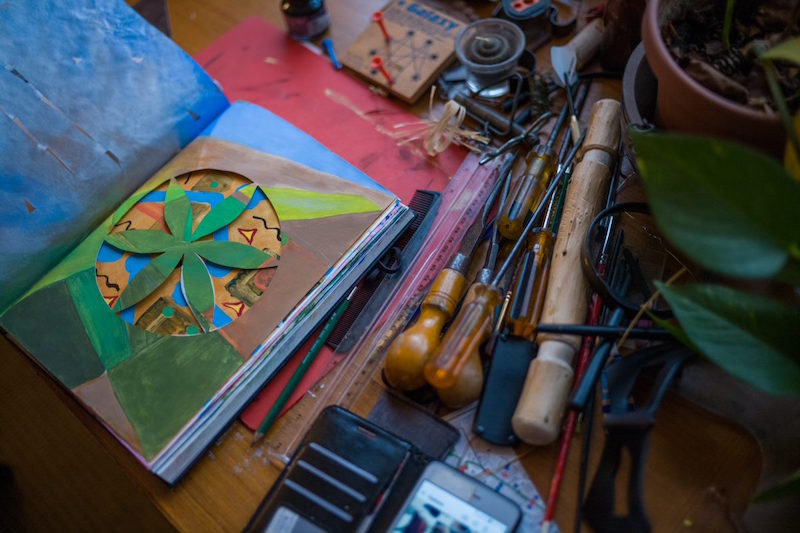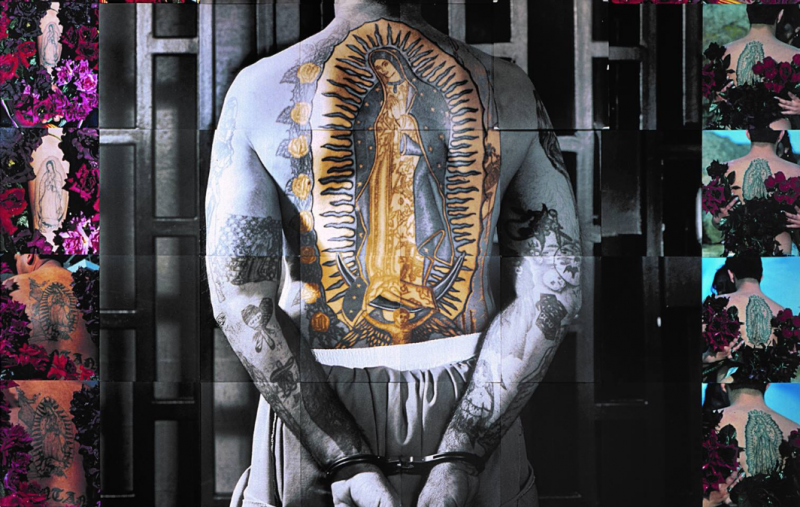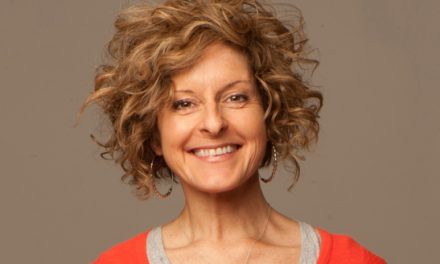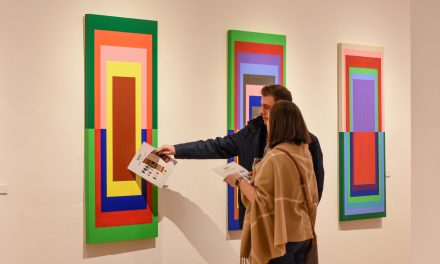I discovered the work of Paul Holloway twice in one week, which is extraordinary, as he has been painting for many decades and has never shown before.
Hanging in both the Albany Center Gallery members show, as well as Schenectady eatery More Perecca’s first group art display, his geometric paintings beckon, mesmerize.
The geometrics lead the eye to deeper recesses, to other planes, where hints of figurative, cubist and surreal architecture may lie.
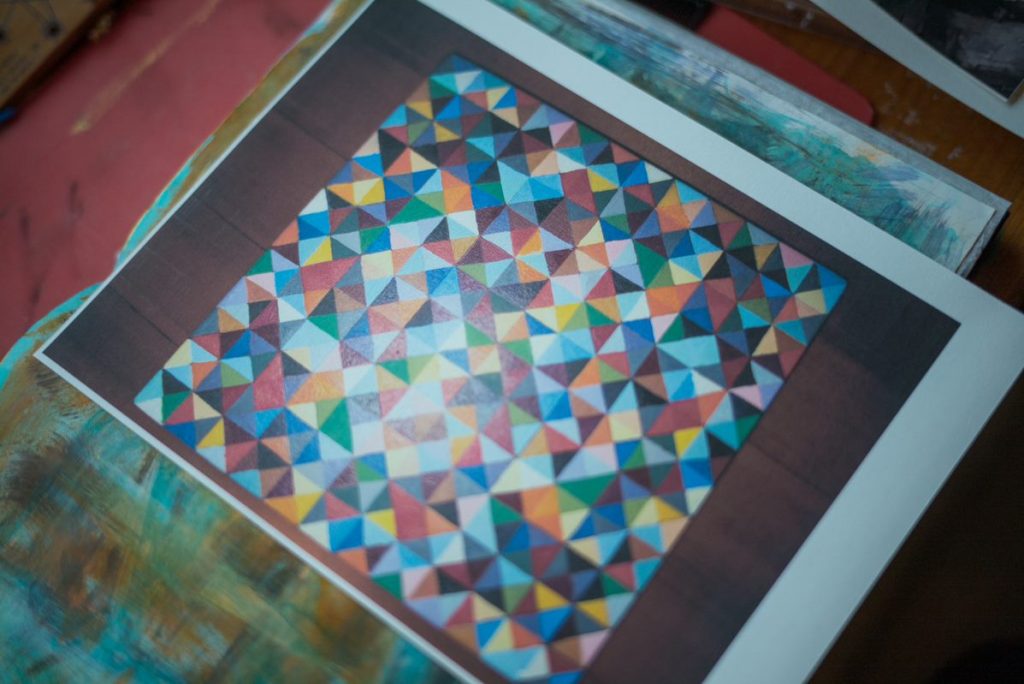

The palette, a brave range of playful greens, reds, yellow, oranges and blues. A landscape is lost in a tangle of frames, a frame gives us a view of a city, fractured into prisms.
This isn’t to say that all of Holloway’s work is geometric in nature. His work follows his fervent imagination and a need to invent methods of bringing order to, of recording, what Holloway alone sees. He does not, by the way, care how you hang his work. It is up to you to decide which end is up and in what compositions his multiple works are arrayed in.
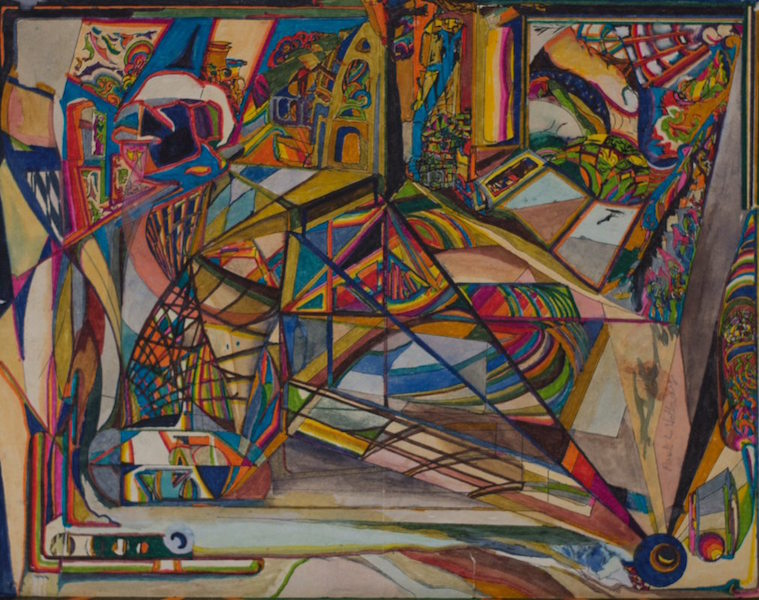
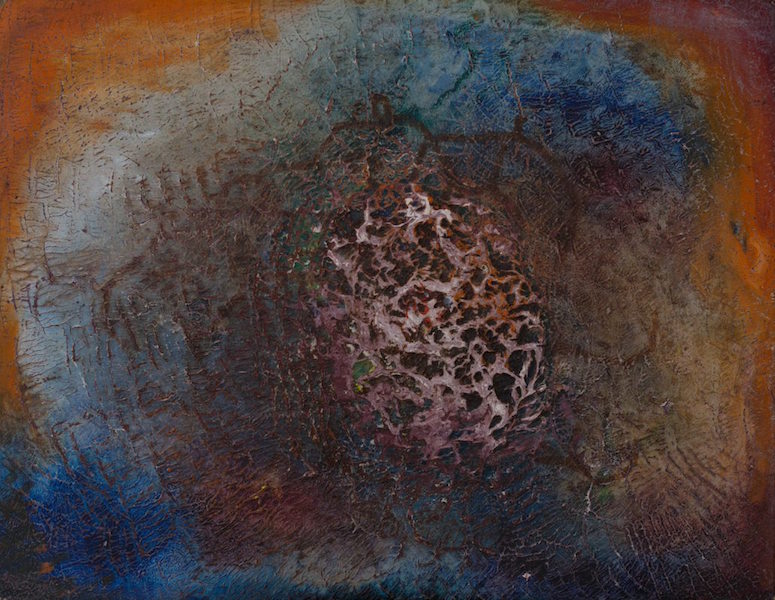
Holloway’s studio is—like that of many independent artists—in his home, a simply furnished apartment. His workspace, a large desk set squarely before a window, letting in ample light and in turn giving Holloway a view of forest and horizon. His desktop appearance might, at first glance, fail to conjure up an artist’s workspace, but upon closer inspection could be nothing else.
Supplies, mixed with ephemera and pieces of projects past. The hardwood combs, he carved them; the quartz crystals in suede sacks, he dug the former and crafted the latter. Like so many creatives, he has searched and found expression where he could and with what materials were at hand. A banjo sits to one side of his living room.
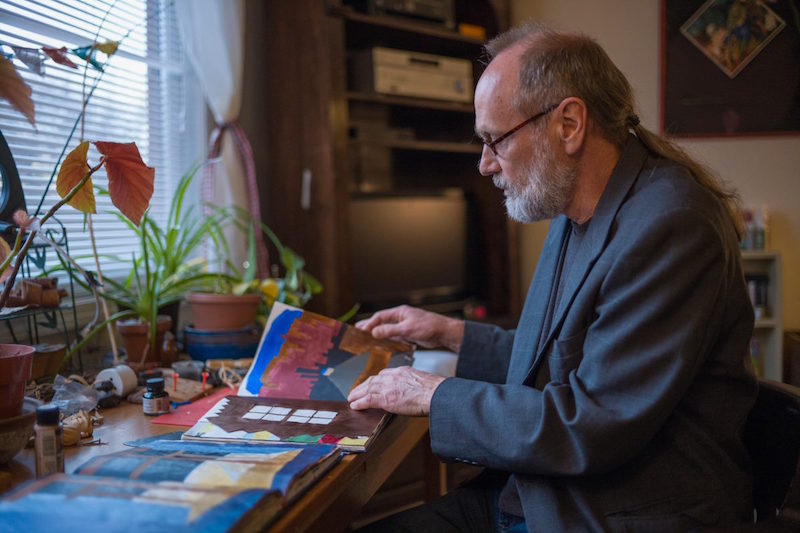

Nothing in the work that I was lucky enough to see quite captures Holloway’s range of output—nor my imagination—than his journals, a piece in current production, a pair of larger art diaries. Instead of sketches on pages, there are spreads covering two open leaves of edge-to-edge compositions in paint and ink.
Each panoramic page flip reveals a new way of seeing: a journey into Holloway’s mind and your own. This ongoing piece is a pair of books with complementary spreads. He calls them polytictics and would like them viewed by two persons, sitting side-by-side on a couch, simultaneously flipping through and engaging each, now four-panel-wide spread of work.
WATCH: Viewing Paul Halloway’s Polytictics
Collab Arts Halloway from Open Stage Media at Proctors on Vimeo.
Inky, flattened cityscapes give way to a bold, tropical collage filled with graphic, natural abstractions. A blurry peacock swirl draws the eye in and pushes energy out, off the edges of paper just as—a moment and page turn later—black brushstrokes record, becoming impossible music.
Holloway suggests his books invent space, representing a larger reality, and are an antidote for claustrophobia. Each spread is a piece to be reckoned with and explored. The whole of it should be enjoyed as the artist would like it best: the equivalent of a day’s visit to a gallery, enjoyed by two persons, exploring side by side.


Van Gogh had his brother Theo as Holloway has a niece, Hillary. This is lucky for us, as her encouragement of this abundant talent has brought it out into a gallery, a restaurant and into the light. She was also the curator, along with proprietor Maria Pappa, of the More Perecca’s Fine Art Pop Up Gallery Event and Show, featuring the work of local artists where Holloway’s work was featured.
Other artists included Natalia and Liza-Jo Mannarino, grade school artists already showing great promise, to multi-award-winning artist Ellie Prakken, an editorial artist at the Times Union. The show came down Jan. 9, which is a shame as, from bathrooms to dining nooks, was quite strong in photography, sketch and painting.


When the books are full, that piece will come to an end and we can only hope that he will start with a fresh pair. It would be wonderful if Holloway’s former trepidation at showing his work would come to an end and a clever gallerist might invent a manner to display the books. In any case, I would like his work and story to inspire other hidden artists to share their output and unique voices with us: an insatiable, ever appreciative, art-loving public. Perhaps there are more insightful nieces, friends, fellow artists to help make it happen. We can only hope.
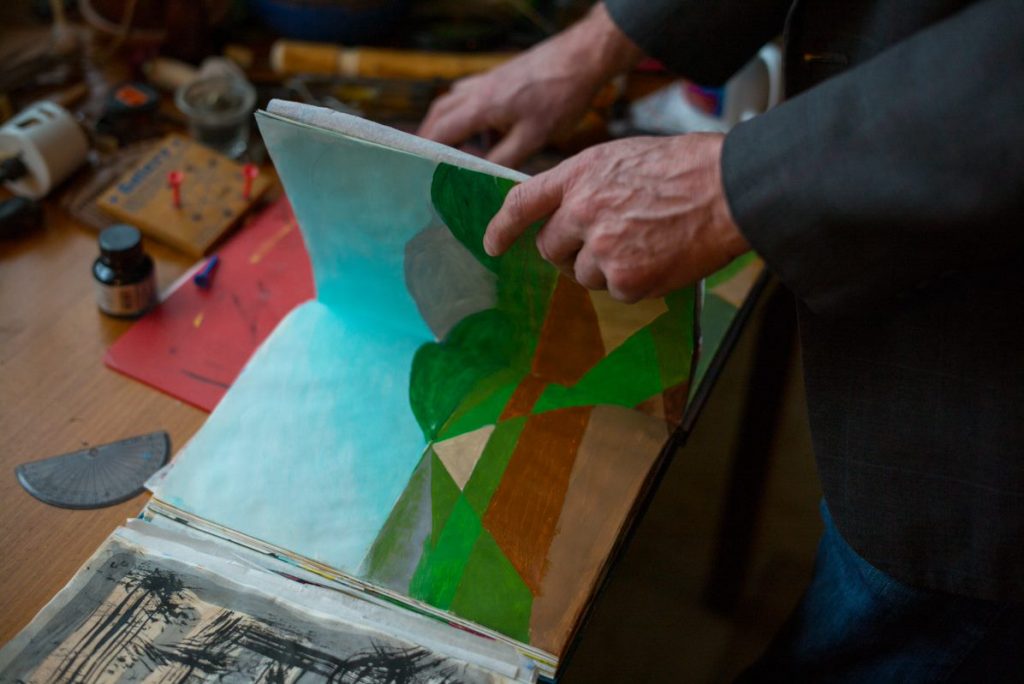

Post script – Great art does not simply hang in museums. It resides in hearts. As you view my ongoing series of studio visits, I would like to encourage our readers to find the art that moves them deeply, made by artists who live nearby and to acquire it. There are few things of worth, permanence and satisfying ownership as art. Have faith in the joy the work brings you and display it with pride in your homes.

